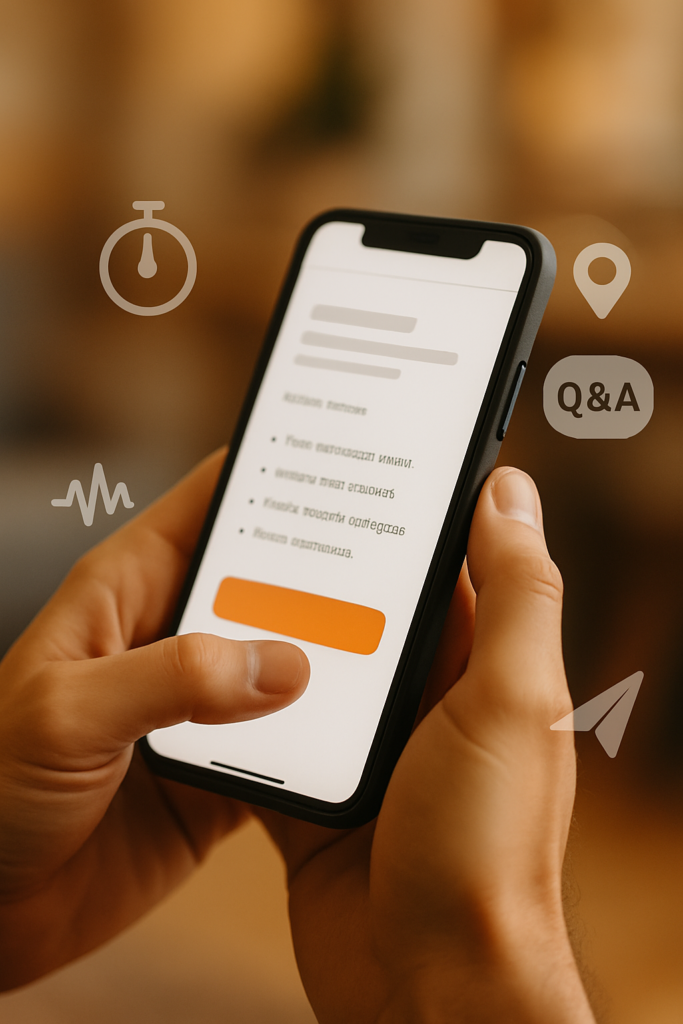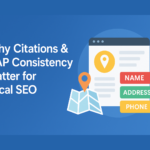- July 21, 2025
- Categories: SEO
- Tags:
Top 10 SEO Strategies for Mobile Devices in 2025
Let’s get real about mobile SEO. You already know it’s important. The problem is, most advice on the topic is a generic, soul-less checklist that feels like it was written by a robot.
This isn’t that.
To win on mobile in 2025, you have to stop trying to please an algorithm and start focusing on the actual human holding the phone. The goal isn’t just to rank; it’s to be genuinely useful. Here’s how you do it.
1. Treat Speed as a Sign of Respect
Page speed isn’t just a technical metric; it’s a sign of respect for your user’s time. We’ve all been there: standing on a street corner, trying to look something up on a shaky connection. Every second of delay feels like an eternity. Mobile users are impatient, so you need to be ruthlessly efficient.
You can start by aggressively compressing your images into modern formats like WebP, trimming down your site’s code, and using a Content Delivery Network (CDN) to get your content to people faster, no matter where they are.
2. Think in Concepts, Not Just Keywords
Google has evolved. It doesn’t just look for keywords anymore; it understands concepts and things, which the pros call “entities.” An entity is anything from a person to a product to a brand or an idea. When you start thinking this way, you can better answer the real question behind a search.
Make sure you clearly state what your page is about in the title and first paragraph. If the topic is complex, like “double-entry bookkeeping,” take a sentence to define it before you explain its benefits.
3. Tap into the “Near Me” Goldmine
For any business with a physical location, local SEO is the fastest way to get results. Mobile searches are often urgent and location-based. When someone searches for “best coffee” on their phone, they mean “best coffee near me, right now.”
To capture this traffic, you have to perfect your Google Business Profile. It’s your digital storefront, so fill it out completely and get some positive reviews. It also helps immensely to create landing pages for specific locations, like “Family Law Services in San Diego” instead of just a generic “Services” page.
4. Write for Scanners, Not Readers
Here’s a hard truth: nobody reads long articles on their phone. They scan. Your job is to make your content as easy to skim as possible. A huge block of text on a small screen is intimidating.
Keep your paragraphs to just two or three sentences. Use bullet points and bolded text to make key information pop. A great trick is to use Google’s “Related searches” at the bottom of the results page for your subheadings—the algorithm is literally telling you what other questions people have.
5. Be More Human for Voice Search
People don’t talk to their phones like they type into a search bar. They use natural, conversational language. Voice search is almost exclusively a mobile activity, used while driving, cooking, or walking down the street. Your content needs to reflect this human element.
Instead of targeting a keyword like “shoe cleaning,” focus on a question like, “How do I get a grass stain out of my white Nikes?” Structuring your content in a Q&A format, where you answer a question clearly in the first paragraph, is the perfect way to get picked up by voice search.

6. Match Your Content to the User’s Goal
Every search has a goal, or “intent,” behind it. The user wants to learn something, compare products, buy something, or find a place. If your content doesn’t match their goal, they will leave immediately. For example, on a page about “Email Marketing Software,” you should have a section that explains what it is (for those learning) and another that compares your product to a competitor (for those comparing).
The buttons on your page should also match this intent—a “Learn More” button works for informational content, while “Shop Now” is for someone ready to buy.
7. Keep Your Site Structure Simple
Your website’s navigation shouldn’t be a maze. A simple, logical flow helps both users and search engines understand how your content is organized. This is even more important on mobile, where a complicated menu is a usability nightmare.
Stick to simple text links for your main navigation, as they’re easiest for search engines to follow. And while it’s good to link to related content, avoid the temptation to link every page to every other page. This just creates confusion.
8. Your Meta Description is a Sales Pitch
That little two-sentence summary under your link in the search results? That’s your meta description. In a sea of blue links, it’s your sales pitch. It’s often the single deciding factor for whether someone clicks on your result or someone else’s.
Make sure you write a unique and compelling description for every important page. It needs to be an accurate summary, because a misleading one will just lead to a frustrated user who leaves right away.
9. A “Responsive” Site Isn’t Enough
A “responsive” website just means it fits on a mobile screen. A “mobile-optimized” website means it’s actually enjoyable to use on a mobile screen. The difference is massive. It’s all about being “thumb-friendly.”
Your buttons need to be big enough to be tapped easily, and your forms should only ask for the most essential information. And for everyone’s sake, kill any intrusive pop-ups that are impossible to close on a phone.
10. Prove a Human Was Here
In an age of AI-generated articles, Google is putting a huge emphasis on content that shows real, first-hand Experience, Expertise, Authoritativeness, and Trust (E-E-A-T). When people are making quick decisions on their phones, they want information from a source they can rely on.
The best way to do this is to write from your own personal experience. Use phrases like, “In my tests…” or “Here’s what I discovered…” Instead of writing another generic overview, find a specific, detailed angle that proves you have knowledge that others don’t.
The Conclusion?
Mobile SEO in 2025 isn’t about outsmarting algorithms, it’s about actually serving the people behind the screens. When you prioritize speed, clarity, real experience, and local relevance, you’re not just improving rankings, you’re building genuine trust and loyalty.
The algorithms will keep evolving, but one thing won’t change: people want fast, human, helpful experiences on their phones. Focus on that, and you won’t just win at SEO, you’ll win with your audience, too.




